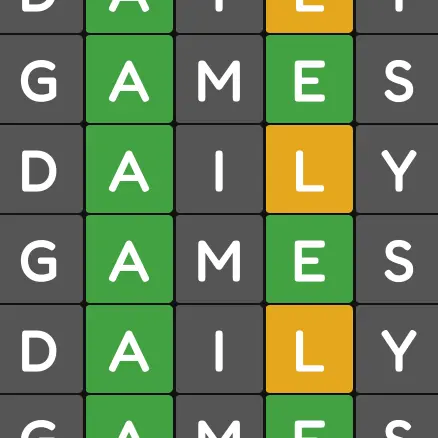That’s fantastic! You should post to mobile wallpapers, it’s a great picture
- 7 Posts
- 230 Comments
Very cool photo, did you take it or find it?

 1·3 days ago
1·3 days agoThat’s fantastic, thank you! I prefer reading to listening when learning so that’s a huge help!

 1·4 days ago
1·4 days agoThat’s perfect. Subbed is fine too if you’re actively listening but my problem was that I would just read the subs, hear the voices, and never actually listen to what they were saying.
For some reason I thought it would eventually sink in but it never did, the immersion listening has been working much better.
Funny story, I looked up Pokemon Podcast in Google translate and pasted it into YouTube and clicked the first result and actually liked the podcast. I went to watch more, but then realized it’s a general podcast that did a single Pokemon episode. Furthermore, it’s called the Badonkadonk Podcast and each episode starts with the guy saying daaaaamnnnnnmmn, that’s a badonkadonk! before starting the podcast in Japanese. It’s pretty funny, the guy is from America and will randomly break into English

 2·4 days ago
2·4 days agoThe practice problems made it stick for me, I just worked through the lesson 2’s problems a couple of weeks ago. That said, language learning is a journey. I’ve watched anime for years and did Duolingo for half a year but never got anywhere. I went to Japan in March but was severely disappointed by how absolutely useless I was without Google translate. I finally decided that I’m going to learn it this time and a couple of months ago I started in earnest.
From what I’ve researched, there’s 3 things you need to focus on (after you’ve learned the Hiragana and Katakana alphabets):
-
Doing Anki flashcards with a vocab deck (I’m currently using Kaishi 1.5K). This software OP created fills the same role so use that if it works for you, I just like Anki’s algorithms that put frequently missed cards in rotation more often. Don’t overload yourself, just do a little bit every day. If you use Anki, set it to only introduce 10 new cards a day.
-
Listening to a lot of Japanese for immersion, arguably the most important. Listen to podcasts, anime with no subs, whatever seems interesting enough to keep you engaged. If it’s about a topic you know about you’ll pick things up faster. Your brain begins to form patterns and with enough inputs will put things together and match words you know with words that are commonly found beside it
-
Learning the grammar. This is arguably less important because with enough listening you’ll passively pick it up, but if you study a bit it can jumpstart it.
There’s a concept called tolerating ambiguity: as you listen to Japanese immersion you will have no idea what’s going on. For me it was infuriating, but you need to accept that you won’t understand in the beginning. This is how babies learn. This is the video that started me on my path to actually trying.
The part that people don’t want to admit is that it takes years to get to the point where you can really understand the language and you’ll have to work at it. If you want to go down that journey then feel free to DM me, I can help you get started and we can throw phrases we learn at each other and watch our progress grow over time.
-
Same 😅
Connections
Puzzle #884
🟦🟪🟪🟪
🟪🟪🟪🟪
🟦🟨🟨🟨
🟨🟨🟨🟦
🟨🟦🟦🟦
What helps me is to take a screenshot and then click the edit button when it pops up. You can use highlighters, I try to guess what color each group will be when I find them. It helps when I think I have a group but then can’t make any of the others work and realize the group was wrong.
Another tip when I’m stuck is to read each word and start naming definitions and context for each word and how I come across the same on another word.
That said, I was stumped today lol. Hank Green sometimes does the daily connections at the end of his videos and it makes me sad how effortlessly he finds connections when I struggled with them
I didn’t know about this archive, his style had changed so much! Thanks for the post
I don’t blame anyone for missing today’s, the only thing that kept me in it was eliminating so many letters that I couldn’t even pick incorrect words anymore lol. Yesterday too! Hopefully we’ll be able to chat the rest of the week.
I wiped on today’s Connections 🥲
deleted by creator
Wordle 1,606 5/6*
⬛⬛⬛⬛⬛
⬛⬛⬛🟨⬛
⬛⬛🟨⬛⬛
⬛🟩🟨⬛🟩
🟩🟩🟩🟩🟩I struggled on it again today, it’s been a tough few days

 8·5 days ago
8·5 days agoYeah, it’s rough, I almost quit five mins into the video and I told my wife it’s the most grating thing I’ve ever heard. After finishing the first and second video I was able to tolerate it and concepts that I had read about but never understood were clicking left and right.
I later realized it might have been because the video creator was sick and was constantly in and out of hospitals so using an artificial voice may have just made everything easier and made me feel bad for being judgy.
I’m not super far in the series yet but there’s put out so many amazing videos, there’s problem sets with answers, and the comments are filled with personal anecdotes where the creator answered DMs to questions in a very in-depth and patient manner.
There’s almost no fluff to the videos after the first one, they’re very concise and the explanations make so much sense. It’s easy to read things like “wa is the topic marker, ga is the subject marker” and not gain any clarity, but I finally understand it thanks to the vids. I’m sure one day I’ll finish the series and wish I could hear more

 9·5 days ago
9·5 days agoIt took me a while to be able to tolerate the voice but it’s the single best resource for learning Japanese grammar. The video creator passed on but they are by far the best teacher I’ve ever come across
Wordle 1,604 5/6*
⬛⬛⬛⬛🟩
⬛⬛⬛⬛🟩
⬛⬛⬛⬛🟩
⬛🟩⬛🟨🟩
🟩🟩🟩🟩🟩WordleBot Skill 93/99 Luck 30/99
This was a rough one

 1·8 days ago
1·8 days agoDon’t worry, we’re the greatest country on earth, complete with a robust healthcare system where it’s super easy to find a doctor and get cheap and effective prescription drugs 🫠

 12·8 days ago
12·8 days agoYeah way to bury the lede. Did they change the title or did OP quote the wrong part? The title from the article is
FBI Informant Who Lied About the Bidens Covertly Released From Jail

 5·10 days ago
5·10 days agoYou’re correct. It’s super annoying when articles take quotes out of context to create a narrative. You get into a debate with someone else, reference the article, then look dumb when they point out that’s not what was actually implied.
Here’s his exact quote:
“All we want is voter ID, you go to a grocery store, you have to give ID, you go to a gas station, you give ID, but for voting, they want no voter ID. It’s only for one reason, and it’s because they cheat. We would pass that in 15 minutes,” Trump ranted, seeming to slur his words at times. “If you don’t get it, you’ll never pass that. You’ll never talk about mail-in ballots. Mail-in ballots make it automatically corrupt.”
It’s pretty clear he’s talking about having to use your ID when required at grocery stores and gas stations, i.e. to buy tobacco and alcohol.
Yes you can interpret it as him saying that he’s going to require an id to buy groceries and gas but that requires a ton of mental gymnastics. Trump doesn’t need fake narratives to sound like a fascist, there’s plenty of actual examples to pick from, but this ain’t it. The fact that he’s trying to get rid of mail in voting is already insane enough
Dang, 14?! That’s incredible.
REUNION November 4, 2025
I solved it in 1️⃣8️⃣ moves! ⭐ ⭐ ⭐ 🦊 🦔 🎉













Unlimited toilet paper should be a basic right, what the fuck